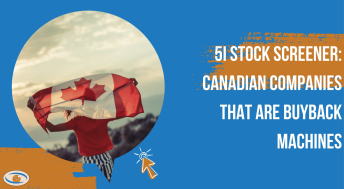As we approach year-end, there are numerous reasons investors should expect and be prepared for volatility. Among those reasons are tax-loss selling, institutional investors locking in gains (especially considering how eventful 2020 has been) final quarter earnings results and other factors related to portfolio rebalancing. This year in particular is a US election year with a backdrop of a global pandemic with economic uncertainty still lingering in many pockets of the economy. In a recent market update, we discuss some portfolio actions investors can take to reduce exposure to potential volatility in the coming months. One suggestion was to look for quality companies with low beta. To help investors generate ideas for these kinds of companies, this month, we screened for stocks that exhibit economic resilience and low correlation with overall market volatility.
What We Screened For
To identify companies with both low correlation to stock market movements and economic resilience we screened for three specific metrics:
Five-year beta of less than 1 - We use a five-year period here to get a more reliable indication of stock volatility over time and to smooth out anomalies caused by the coronavirus.
High earnings stability over the last five-years - While low beta is meant to reduce share price volatility, high earnings stability helps to find companies withstable underlying businesses and profits, which investors tend to gravitate towards during times of uncertainty. We discuss how we measure earnings stability below.
A market capitalization of more than $1 billion – This market cap criteria is higher than usual but for good reason. Larger companies tend to have better resilience and access to more capital during tough economic times compared to smaller companies. Larger companies in the same industry are also more likely to weather a recession. As a result, the investors tend to migrate towards large-caps during times of stock market uncertainty. How we measure ‘earnings stability’? Certainly, there are many ways one can go about doing this. The number shown in the “Earnings Stability” column below is the R-squared of the last 20 quarters of historical earnings. A four-quarter moving average of actual earnings per share (EPS) is used for each of the 20 periods. In other words, this measures how correlated each quarter’s earnings are with the last four quarters and this is averaged over a 20 quarter (five-year) period. A high correlation coefficient means earnings trending within a narrower band and alow one means earnings are more volatile and less consistent. Without further a due, here’s a list of 38 Canadian companies that met our criteria:
| Company Name | Ticker | Company Market Cap (CAD) |
Beta 5 Year | 5 year Earnings Stability (R2) | ROE 5 YR Avg | Dividend Payout Ratio - 5 Yr Avg |
| CGI Inc | GIBa.TO | 20,978,715,970.75 | 0.94 | 0.97 | 15.64 | |
| Quebecor Inc | QBRb.TO | 8,201,451,986.86 | 0.20 | 0.97 | 120.89 | 12.3% |
| Open Text Corp | OTEX.TO | 14,861,473,105.32 | 0.73 | 0.97 | 17.35 | 34.6% |
| Constellation Software Inc | CSU.TO | 32,021,453,340.91 | 0.58 | 0.97 | 95.73 | 64.3% |
| TC Energy Corp | TRP.TO | 53,617,218,120.98 | 0.68 | 0.97 | 14.16 | 126.8% |
| Waste Connections Inc | WCN.TO | 36,208,593,909.48 | 0.59 | 0.96 | 8.09 | 34.0% |
| TMX Group Ltd | X.TO | 7,752,443,045.94 | 0.94 | 0.94 | 8.55 | 64.6% |
| Dollarama Inc | DOL.TO | 16,181,027,127.14 | 0.89 | 0.92 | 10,867.76 | 10.2% |
| Alimentation Couche-Tard Inc | ATDb.TO | 49,815,410,346.46 | 0.81 | 0.91 | 16.06 | 10.1% |
| Canadian Pacific Railway Ltd | CP.TO | 57,391,406,353.97 | 0.79 | 0.91 | 31.58 | 17.4% |
| Toromont Industries Ltd | TIH.TO | 6,827,105,837.30 | 0.74 | 0.89 | 18.80 | 32.7% |
| Wesdome Gold Mines Ltd | WDO.TO | 1,953,918,469.19 | 0.93 | 0.89 | 10.36 | |
| Enghouse Systems Ltd | ENGH.TO | 4,166,546,430.18 | 0.89 | 0.89 | 13.04 | 33.0% |
| Leon's Furniture Ltd | LNF.TO | 1,556,314,602.60 | 0.49 | 0.87 | 12.64 | 37.0% |
| Metro Inc | MRU.TO | 15,895,388,747.88 | -0.13 | 0.87 | 16.54 | 18.4% |
| Canadian Apartment Properties Real Estate Investment Trust | CAR_u.TO | 7,642,552,209.76 | 0.81 | 0.85 | 8.23 | 22.2% |
| WSP Global Inc | WSP.TO | 9,987,362,249.19 | 0.98 | 0.85 | 8.77 | 67.2% |
| Canadian National Railway Co | CNR.TO | 104,031,755,590.87 | 0.63 | 0.85 | 23.16 | 27.3% |
| Franco-Nevada Corp | FNV.TO | 35,441,835,786.36 | 0.62 | 0.82 | 5.18 | 98.2% |
| Northland Power Inc | NPI.TO | 8,561,924,797.57 | 0.60 | 0.81 | 27.24 | 119.5% |
| Teranga Gold Corp | TGZ.TO | 2,441,753,808.90 | 0.78 | 0.79 | 11.96 | |
| Premium Brands Holdings Corp | PBH.TO | 3,827,487,504.46 | 0.95 | 0.78 | 15.93 | 77.4% |
| CCL Industries Inc | CCLb.TO | 9,234,151,022.31 | 0.59 | 0.76 | 17.14 | 20.6% |
| Rogers Communications Inc | RCIb.TO | 27,228,538,493.73 | 0.26 | 0.73 | 25.48 | 61.2% |
| Hydro One Ltd | H.TO | 17,616,003,560.76 | 0.22 | 0.73 | 6.62 | 111.7% |
| Royal Bank of Canada | RY.TO | 138,104,963,710.44 | 0.75 | 0.72 | 16.72 | 46.2% |
| Telus Corp | T.TO | 30,631,531,354.31 | 0.55 | 0.69 | 9.98 | 78.3% |
| BlackBerry Ltd | BB.TO | 3,730,910,123.86 | 0.98 | 0.68 | 3.03 | |
| Laurentian Bank of Canada | LB.TO | 1,152,542,404.79 | 0.95 | 0.67 | 10.51 | 55.5% |
| Fortis Inc | FTS.TO | 25,088,811,480.00 | 0.06 | 0.67 | 7.83 | 61.9% |
| George Weston Ltd | WN.TO | 14,839,966,268.91 | 0.25 | 0.66 | 13.45 | 51.8% |
| Algonquin Power & Utilities Corp | AQN.TO | 12,119,343,465.20 | 0.30 | 0.66 | 10.80 | 95.2% |
| Toronto-Dominion Bank | TD.TO | 108,283,037,441.49 | 0.72 | 0.63 | 14.37 | 44.9% |
| Stantec Inc | STN.TO | 4,479,108,341.67 | 0.86 | 0.58 | 10.91 | 36.0% |
| Cogeco Communications Inc | CCA.TO | 5,000,884,486.99 | 0.47 | 0.58 | 17.55 | 39.4% |
| Thomson Reuters Corp | TRI.TO | 53,998,493,511.44 | 0.36 | 0.57 | 10.46 | 156.8% |
| Winpak Ltd | WPK.TO | 2,831,173,041.79 | 0.07 | 0.53 | 13.76 | 19.2% |
| Innergex Renewable Energy Inc | INE.TO | 4,522,180,893.42 | 0.38 | 0.50 | 1.24 |
Companies with the lowest beta
We naturally found many companies in the utilities sector. Companies like Fortis (FTS), Hydro One (H) and Algonquin Power (AQN) tend to have stable demand through all economic cycles. Food staples companies like Metro (MRU) also came up in the lowest beta category. MRU interestingly had a slightly negative beta (almost no correlation, but slightly opposite to the market). MRU stock has performed quite well this year showing an almost 20% gain year to date. This is in comparison to George Weston Ltd (WN), standing at -4.7% so far this year. While WN revenues are arguably more diversified (businesses in real estate, food processing and grocery through Loblaws), MRU’s grocery focus seems to have served better in a pandemic environment. MRU also scores better on beta, earnings stability, ROE and dividend payout. Other low beta options telecommunication and media names like Rogers communication (RCI) Telus (T), Quebecor Inc (QBR) and Cogeco Communications (CCA). These names likely get their 'recession-proof' characteristics from the fact that people are not likely to stop needing their phones and TV channels. Staying at home has also arguably led to higher TV services subscriptions. Companies with the highest earnings stability are actually a little bit higher on the beta side but still below 1. A likely explanation for this is that higher earnings stability over time attracts more investors, making these companies represent more of the TSX and in turn, have a higher correlation with beta. The larger market caps seen by these companies is also a testament to this. Well known names such as TC Energy Corp (TRP), Waste Connections(WCN), TMX Group (X), Dollarama (DOL), Alimentation Couche-Tard (ATD) and Canadian Pacific Railway (CP) score among the highest in earnings stability as well as Canadian tech giants like CGI (GIB), Open Text (OTEX) and ConstellationSoftware (CSU), a long-time favorite at 5i Research. One company that scored near to the top of the list on both low beta and earnings stability was Quebecor Inc (QRB), the operator of Videotron in Quebec. The company generally has solid cash flows and is trading at a decent valuation of 14x next year’s earnings. QBR also has improved profitability significantly over the last five years and pays a decent2.4% yield with one of the lowest payout ratios on this list of 12%.
Bonus indicators: Five-year return on Equity (ROE) and Dividend Payout (DP)
While we did not set specific thresholds or minimums on these, we made them available in the columns for readers to view. A good practice is to look for companies with high/consistent ROE (an indication of good management performance) and lower DP ratio (more flexibility with reallocating company profits and a lower likelihood of a company cutting/suspending the dividend). Ultimately the goal of this screen is to help investors identify a few names to add to a portfolio to lower overall portfolio risk, especially if one is uncomfortable with the current beta exposure of his/her stock holdings and worried about potential volatility in the coming months. Of course, as always, this list is not an endorsement for these companies or a recommendation, rather a starting point for stocks to consider.
Remember to always do your research before investing!
Take care,

Thinking about becoming a 5i Research Member? There is no better time to join but don't just take our word for it. Try it for free for the next month and experience all the benefits of the 5i Research membership. (And don't worry. We won't ask for your credit card upfront)
Disclosure: Employees of 5i Research involved in the research process cannot trade in Canadian traded stocks and do not hold a financial interest in Canadian companies mentioned.







Comments
Login to post a comment.
"Without further a due, here’s a list of 38 Canadian companies that met our criteria..."